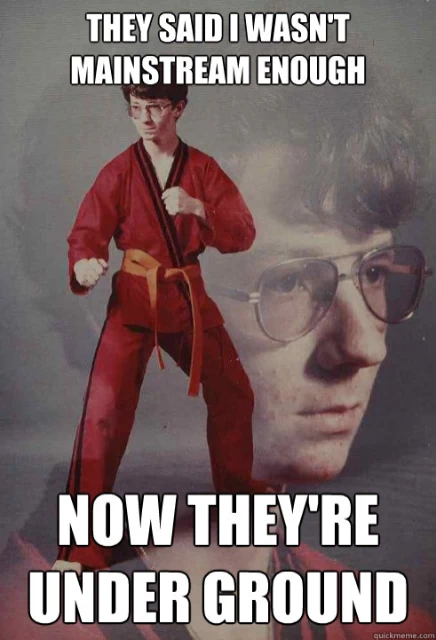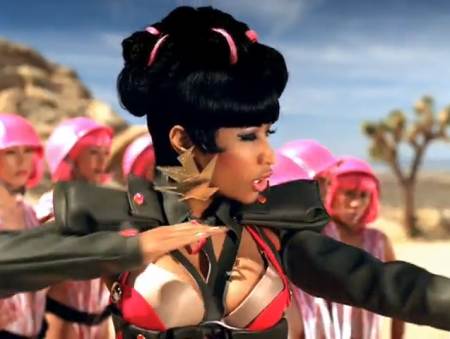
Tag: Karate
Why Are White Belt Fighters So Dangerous?
Many experienced martial artists believe that, of all the different categories of training partners, absolute beginners are the most dangerous. To outsiders, this sounds like a paradox. Shouldn’t those with the least martial arts training be the least dangerous?
It is not truly a paradox, only a misconception. And not all white belts are dangerous, obviously. But those that are, if only on the mat, are so for the following reasons.
Their goal is always to win. They don’t yet understand the difference between trying to win, and trying to cultivate the skills that one uses to win. Real fights are chaotic affairs, and chaos is not a proper breeding ground for skill development; thus, training in respectable martial arts consists of a series of games, first introducing support structures (e.g. rules and conventions), then dismantling them one step at a time.
The need for, or value in this approach is not obvious–and it is not always explained at the outset. So some white belts never appreciate the context of their practice. Others consider themselves above the “organized despair” of the “traditional mess,” and when a rule stands between them and a sparring victory, they break it without hesitation. The conventions and rules of training, they reason, are “unrealistic in a real fight.”
Crossing The Pond – Martial Expo 2010 Review

- The inaugural Crossing The Pond Martial Expo was held last weekend in West Seattle. This seminar brought together six well-known and highly skilled instructors of martial arts and self-defense from across the United States and United Kingdom.
- Over the weekend, two one-hour workshops were held by instructors Al Peasland, Nicholas Yang, Kris Wilder, Rory Miller, Marc “Animal” MacYoung, and Iain “Tuna Fish Pizza” Abernethy.
- Approximately thirty-five people were in attendance. Among the students, at least one third appeared to be black belts and/or instructors themselves.
- Participants were open-minded, polite, and patient–especially with this author, who hadn’t done any Karate training since elementary school. Egoism, inappropriate competition, and input from self-declared “assistant instructors” was minimal. This is a credit to the affable seminar host, Kris Wilder, and the other teachers as well, who together set the right tone for the event.
Karate Dance War Explosion!
Sensei Pacer is not only a former member of The Power Team, a crew of Christian Evangelist strongmen. He is also a personal trainer, and the founder of Hip Hop Martial Arts.
Master Sensei Pacer likes to say that “nobody in the world moves like Sensei Pacer.”

Suzi Wong, Fytedancer
Sorry, Sensei Pacer, but I know someone who moves like Sensei Pacer!
The Martial Arts Styles of Hip-Hop Heroes

Artist: Nicki Minaj
Video: Your Love
Styles: Kenjutsu, Karate
Facts: Michael Jai White, who plays the sensei in “Your Love”, holds black belts in seven different styles of martial arts, including Tang Soo Do and Kyokushin.
Karate Chops Are Fun…Until Someone Gets Hurt
“Diamond Dave, The Kung Fu Hillbilly”
At Diamond Dave’s Ninja School, you’ll learn the difference between a Ninja chop, a Judo chop, and a Karate chop.
Board Breaking Tips: How Anyone Can, Why Nobody Should
My first experience with board breaking was a total humiliation. I was a ten-year-old Karate student, with six months of practice under my orange belt, when my sensei decided we should all break some wood. He asked each of us to acquire a stack of boards, one square foot by one inch in size, and bring them to our next class.
As a bright but naive child, I had no idea that the practice of tameshiwari, or breaking, was an instrument of martial arts fraud. I only knew that it looked cool, and that it required focus–or so my teacher said.
Relax With This Karate Porn Video
Karate Values, American Values
Americans do not usually see themselves, when they are in the United States, as representatives of their country. They see themselves as individuals who are different from all other individuals, whether those others are Americans or foreigners. Americans may say they have no culture, since they often conceive of culture as an overlay of arbitrary customs to be found only in other countries. Individual Americans may think they chose their own values, rather than having had their values and the assumptions on which they are based imposed on them by the society in which they were born. If you ask them to tell you something about “American culture,” they may be unable to answer and they may even deny that there is an “American culture.”
(from Handbook for Foreign Students and Scholars)
Karate Informality
A few minutes prior to the start of class, karateka (students) enter through the front door, immediately bowing to the sensei (teacher) and/or the kamidana (dojo shrine). The karateka remove their shoes, and enter the changing room to don their training uniforms.
A Sexy Moment in Karate History
The year was 2002. After a decade of expansion, our nation’s economy was reeling from the devastating effects of the dot-com collapse and 9-11 terror attacks.
No industry was immune to the slowdown. Sales of karate-themed entertainment products—long considered a bellwether for overall financial health—were sharply impacted.

Forged in this bleak crucible: a masterpiece of video game action. Creative Edge Studios, a small but courageous band of developers and artists, released the world’s first digital bikini-based fighting adventure.
